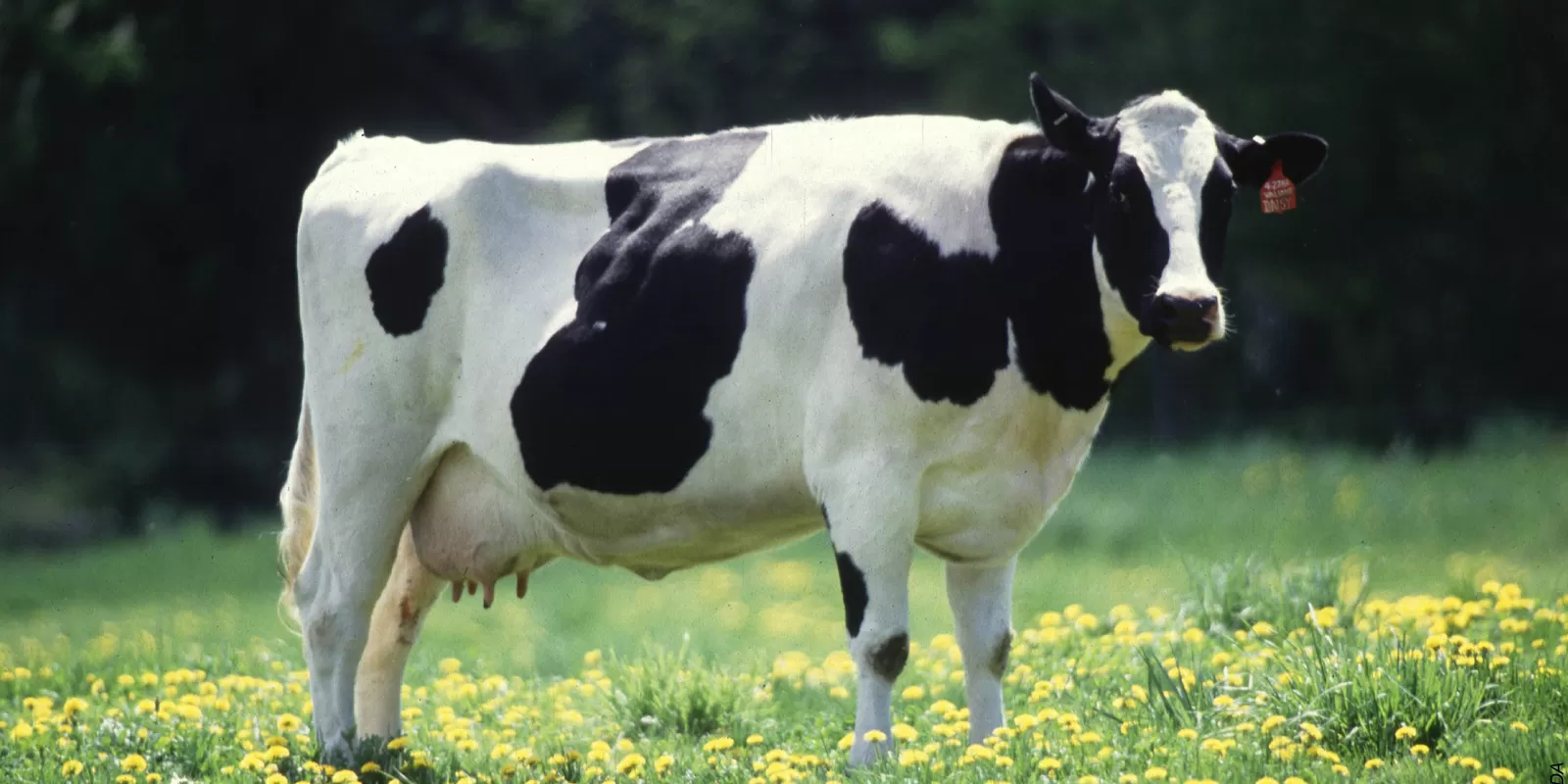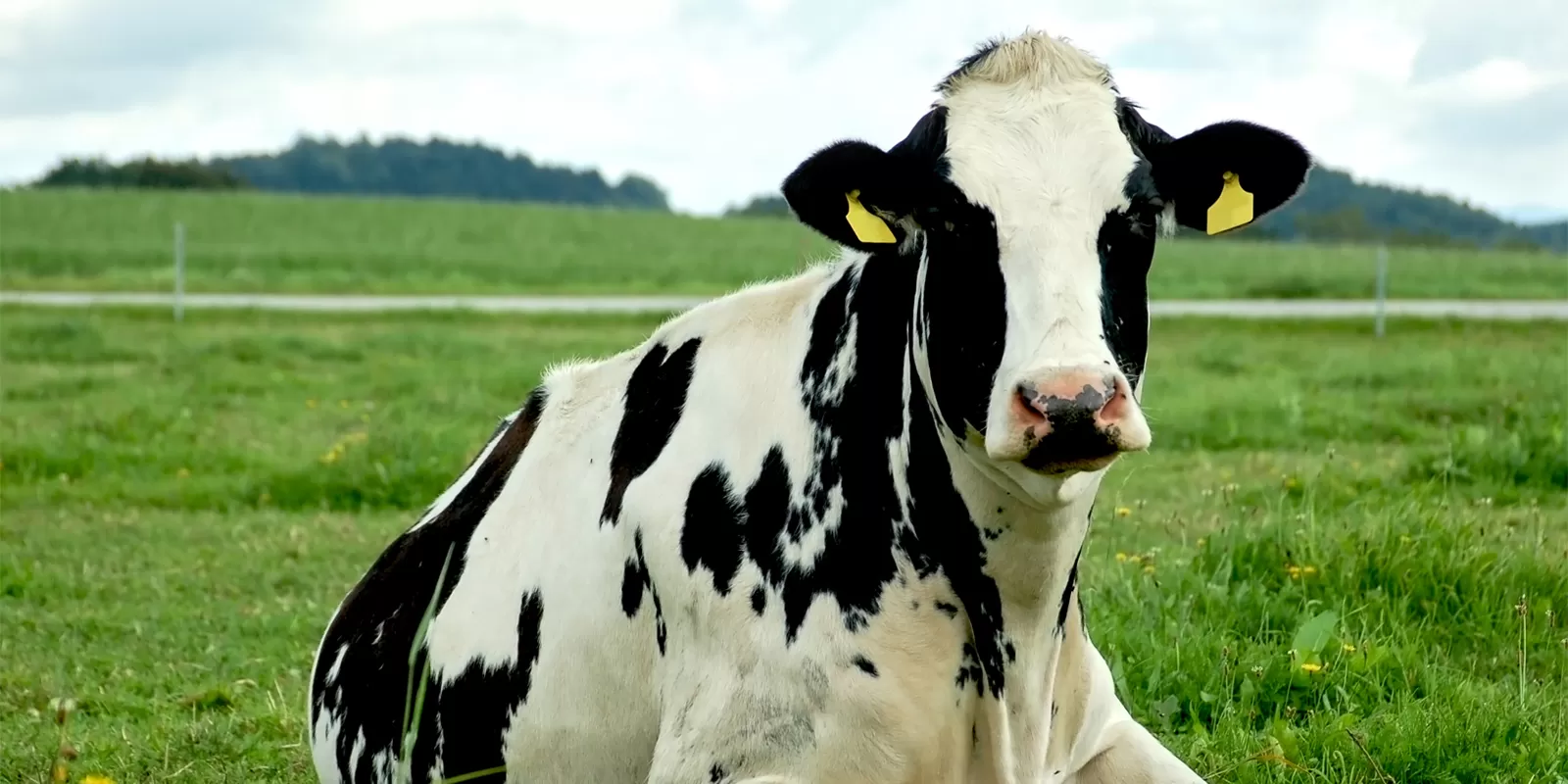Holstein
Holstein is a breed of cattle known today as the world's highest-production dairy animal. Holstein cattle are most quickly recognized by their distinctive color markings and outstanding milk production.
Physical Characteristics
Holsteins are large, stylish animals with color patterns of black and white or red and white. A healthy Holstein calf weighs 90 pounds or more at birth. A mature Holstein cow weighs about 1,500 pounds and stands 58 inches tall at the shoulder. Holstein heifers can be bred at 13 months of age, when they weigh about 800 pounds. It is desirable to have Holstein females calve for the first time between 23 and 26 months of age. Holstein gestation is approximately nine months. While some cows may live considerably longer, the average productive life of a Holstein is approximately four years.
Superior Performance
Holstein dairy cattle dominate this country's milk production industry. The reason for their popularity is clear: unexcelled production, greater income over feed costs, unequaled genetic merit, and adaptability to a wide range of environmental conditions. Added up, this means more profit for the dairy producer who milks Holsteins. This point becomes even clearer when you consider that nine of every 10 dairy producers currently milk Holsteins.
Milk Production
The 2011 average actual production for all U.S. Holstein herds that were enrolled in production-testing programs and eligible for genetic evaluations was 23,385 pounds of milk, 858 pounds of butterfat and 719 pounds of protein per year.


